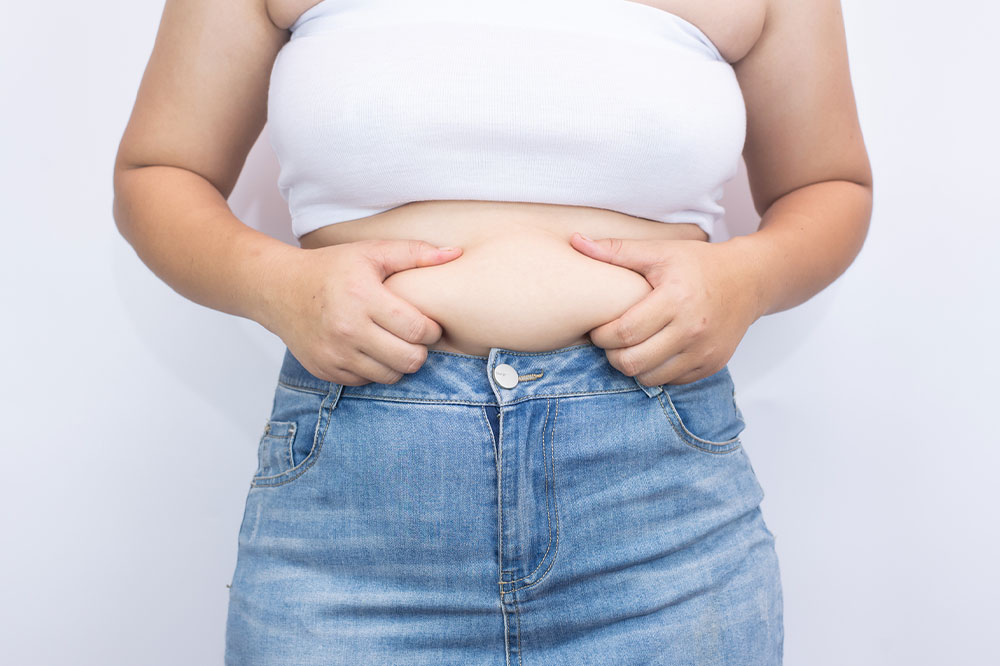
What causes abdominal fat and what to do about it
A healthy body facilitates a healthy mind and heart and fosters a happy life. Consequently, preventing lifestyle diseases like diabetes, cholesterol, and heart problems is the first step to ensuring a healthy existence. Fat deposit around the waist is one of the early signs of such lifestyle conditions and should be treated early to avoid further repercussions. This article analyzes the causes and symptoms of an increase in abdominal fat and lists remedies and treatment options:
Causes of abdominal fat accumulation
- Overeating
Overeating over extended periods can slow the digestive process considerably; consequently, the food remains in the belly for a longer time, accumulating mass around the abdomen. - Consuming unhealthy foods
Another major cause of fat accumulation around the waist is the high intake of unhealthy foods, typically fast foods loaded with trans fats, high sodium and sugar levels, oil, and preservatives. In addition to paving the way for diseases like diabetes and cholesterol, fast food can redirect fat from other body parts to the belly, increasing fat accumulation in the abdomen. - Sedentary lifestyle
Today’s work culture of spending hours on end before the screen has resulted in the onset of a sedentary lifestyle and acute lack of exercise. Less exercise, combined with regular intake of fast food, causes individuals to consume more calories than they burn from their bodies, resulting in abdominal fat accumulation. - Lack of sleep
Studies have shown that lack of sleep results in a 9% increase in cumulative abdominal fat and an 11% spike in visceral fat. Such results have been demonstrated even among young, healthy individuals, who showed a considerable increase in abdominal fat accumulation due to lack of sleep. - Elevated stress levels
Increased stress releases a hormone called cortisol, which typically increases a person’s appetite. Consequently, individuals under high stress indulge in binge eating, resulting in fat development around the waist.
Symptoms of abdominal fat accumulation
- Perpetual bulge in the stomach
Over time, individuals with abdominal fat accumulation typically have a perpetual bulge in their stomachs, as opposed to those who feel bloated during specific times, such as after meals or while menstruating. - Ability to feel the stomach muscles upon pressing
Another way to distinguish between bloating and accumulation of fat around the waist is to gently press the stomach in the bloated region. Tightness of the abdomen upon pressing indicates bloating, whereas softness of the belly despite swelling implies abdominal fat accumulation. - Increased waist-to-hip ratio
Another way to understand if fat is accumulated around the waist is to measure your waist and hip sizes and divide the waist measurement by the hip measurement. A high waist-to-hip ratio is a symptom of increased abdominal fat.
Treatment options for abdominal fat accumulation
- Slim liposuction
Slim liposuction or slim lipo is a surgical technique used to remove excessive fat accumulation in the abdomen. The surgeon creates an incision and eliminates excessive mass with the help of assisted laser therapy. - Fat freezing or cryolipolysis
This non-invasive procedure uses cold temperatures to freeze fat deposits in the abdomen and other areas of the body. Today, the procedure has been commonly patented as CoolSculptingTM. The doctor typically uses a device called an applicator to freeze fat cells present beneath the skin’s surface. - Cosmetic procedures
Cosmetology comprises several surgical and non-surgical procedures to eliminate the accumulation of fat around the waist. Such treatment aims to establish a well-contoured shape and tighten the skin, preventing sagging due to sudden loss of mass in the body.
Remedies and tips to eliminate abdominal fat
- Up the soluble fiber intake
Soluble fiber present in certain foods forms a gel-like substance in the stomach, which slows down the digestion and nutrient absorption processes. Consequently, it helps one feel satiated and promotes limited eating. Foods rich in soluble fiber include avocados, Brussel sprouts, blackberries, oats, barley, and citrus fruits. - Exercise regularly
Another integral aspect of eliminating abdominal mass accumulation is to exercise regularly and avoid being sedentary. Regular cardio exercises like walking, skipping, jogging, and cycling, combined with strength training, can contribute to abdominal fat reduction. - Avoid processed foods
Processed foods are high in saturated fats, sodium, sugar, and empty calories, promoting fat accumulation around the waist. In addition, it helps to replace fast foods with healthy fats, carbohydrates, proteins, and other essential nutrients. - Maintain a healthy sleep cycle
Experts recommend 7-9 hours of sleep every night for a healthy metabolism and reduction of abdominal muscle mass. Staying away from gadgets before sleeping, purchasing comfortable mattresses and pillows, and sleeping in a dark room can help improve sleep quality. - Avoid stressors
Reduction in stress levels can curb binge eating and promote a healthy lifestyle. Individuals must identify the primary stressors in their lives, such as work pressure, family issues, household chores, etc., and work toward eliminating them.




